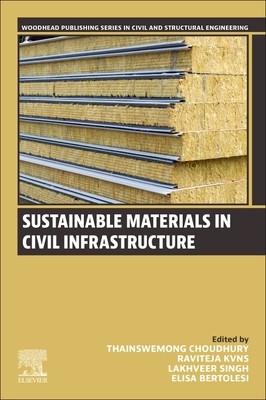
- We will send in 10–14 business days.
- Publisher: Woodhead Publishing
- ISBN-10: 0443161429
- ISBN-13: 9780443161421
- Format: 15.2 x 22.9 x 1.5 cm, minkšti viršeliai
- Language: English
- SAVE -10% with code: EXTRA
Sustainable Materials in Civil Infrastructure (e-book) (used book) | bookbook.eu
Reviews
Description
Sustainable Materials in Civil Infrastructure covers the latest breakthroughs in innovative eco-materials and poses solutions for resilient and sustainable infrastructure. The book provides valuable insights into innovative research studies on eco-materials used for construction applications, which will provide researchers with a useful reference guide on recycled steel, low-carbon concrete, bio-concrete, self-healing concrete, and industrial by-products such as fly ash, natural geosynthetic fibres, and shape memory alloys for infrastructure development. The chapters cover design applications of bio-concrete, and usage of eco-materials in landfill liners and masonry. The book clearly identifies the issues that remain as obstacles for the large-scale use of green concrete, and bio-concrete and provides practical solutions to overcome them. The chapters create a knowledge base for the development of sustainable design methodologies that are widely accepted among various environmental monitoring/controlling bodies throughout the world.
EXTRA 10 % discount with code: EXTRA
The promotion ends in 21d.14:12:31
The discount code is valid when purchasing from 10 €. Discounts do not stack.
- Publisher: Woodhead Publishing
- ISBN-10: 0443161429
- ISBN-13: 9780443161421
- Format: 15.2 x 22.9 x 1.5 cm, minkšti viršeliai
- Language: English English
Sustainable Materials in Civil Infrastructure covers the latest breakthroughs in innovative eco-materials and poses solutions for resilient and sustainable infrastructure. The book provides valuable insights into innovative research studies on eco-materials used for construction applications, which will provide researchers with a useful reference guide on recycled steel, low-carbon concrete, bio-concrete, self-healing concrete, and industrial by-products such as fly ash, natural geosynthetic fibres, and shape memory alloys for infrastructure development. The chapters cover design applications of bio-concrete, and usage of eco-materials in landfill liners and masonry. The book clearly identifies the issues that remain as obstacles for the large-scale use of green concrete, and bio-concrete and provides practical solutions to overcome them. The chapters create a knowledge base for the development of sustainable design methodologies that are widely accepted among various environmental monitoring/controlling bodies throughout the world.


Reviews